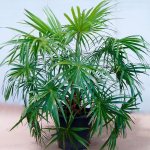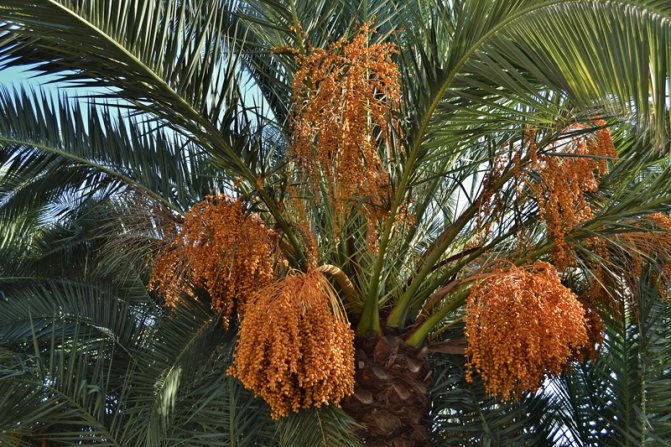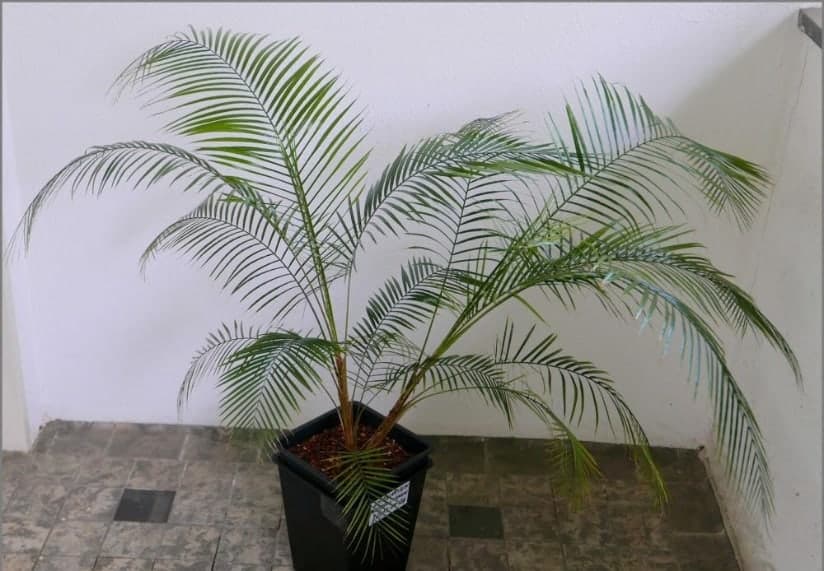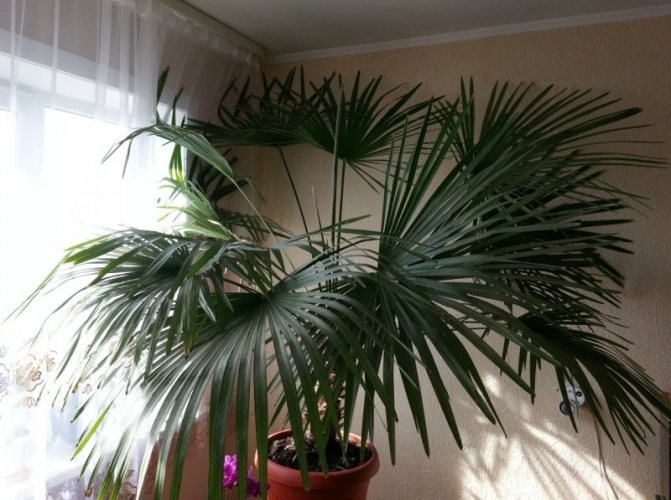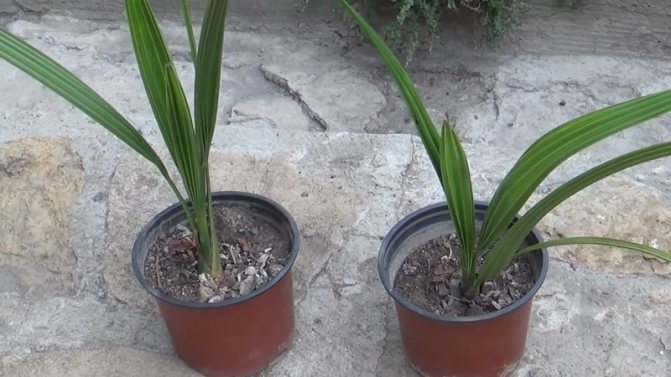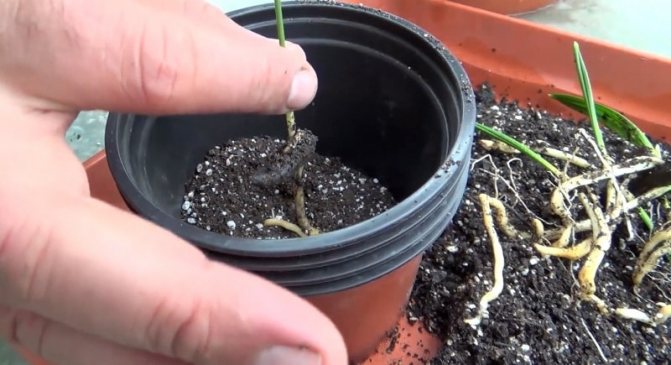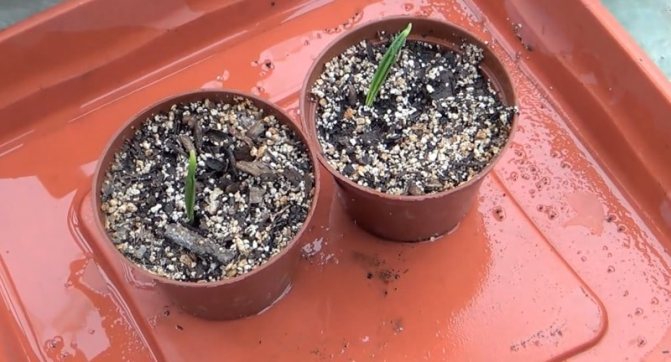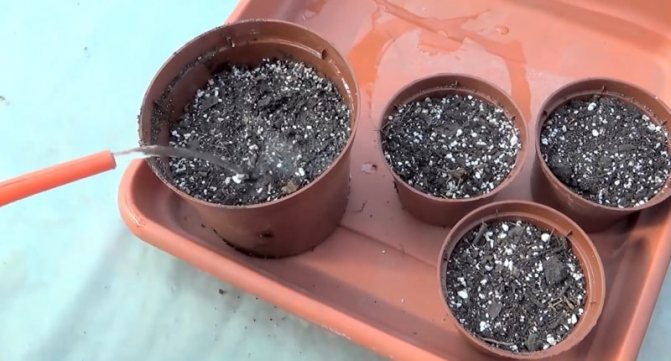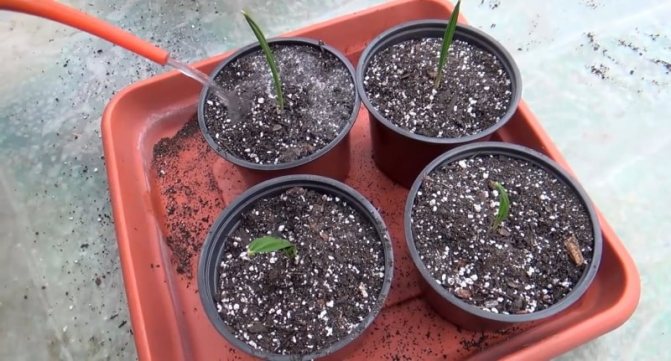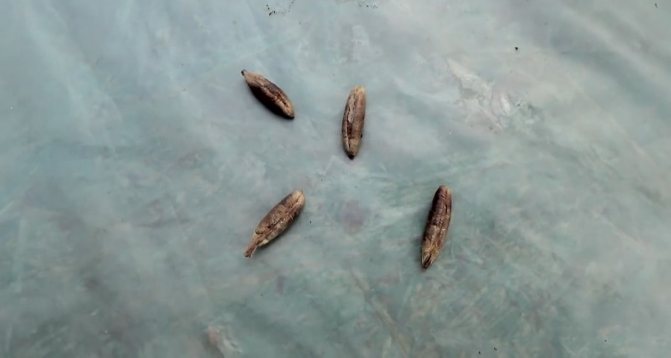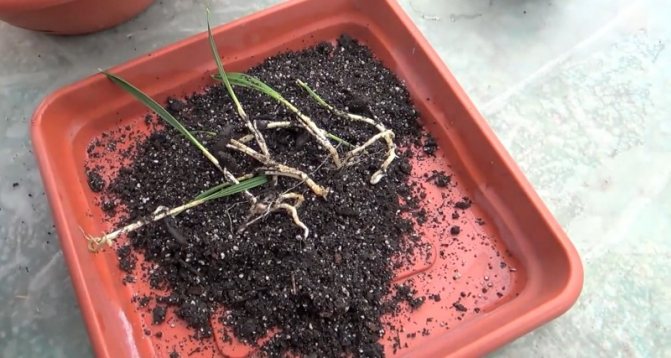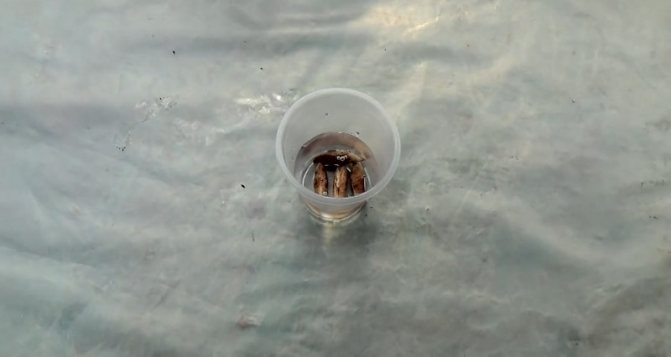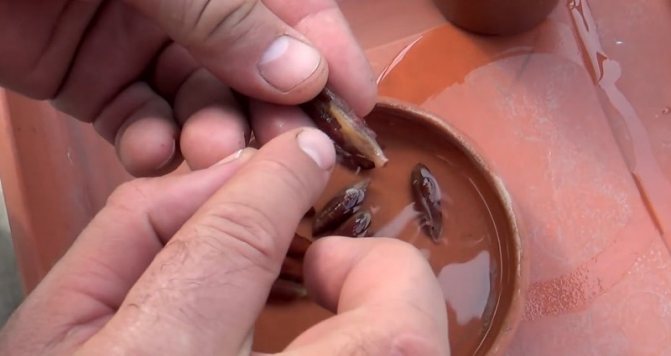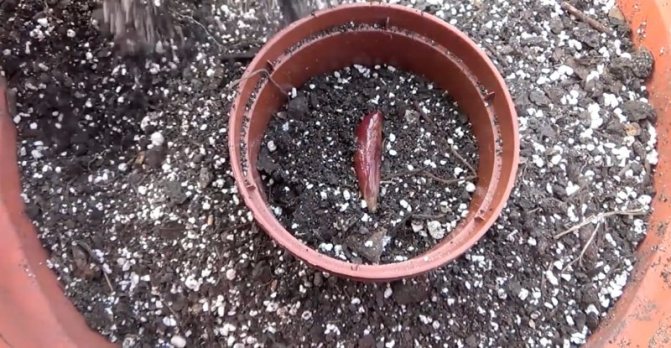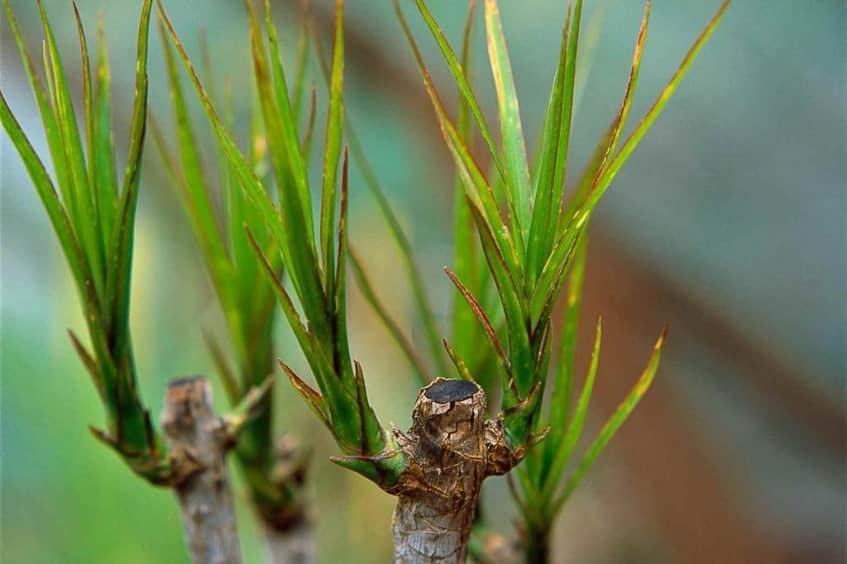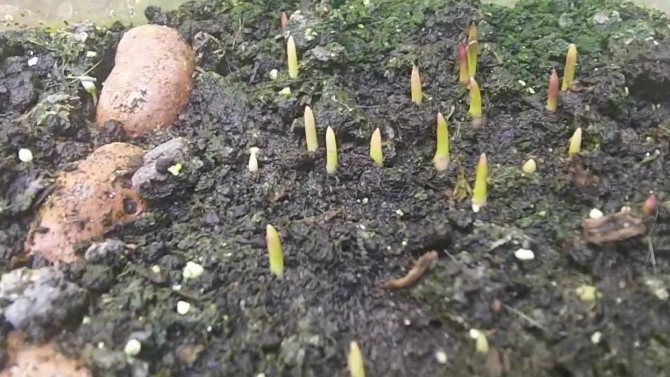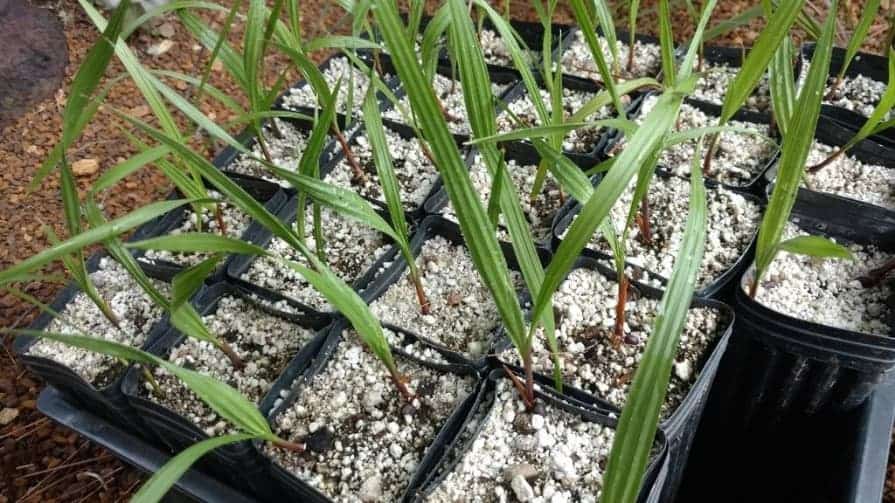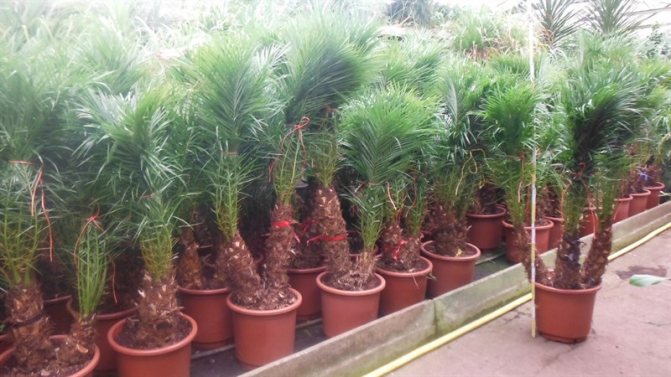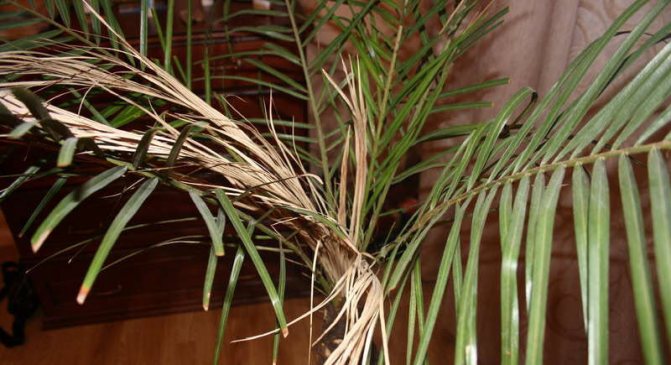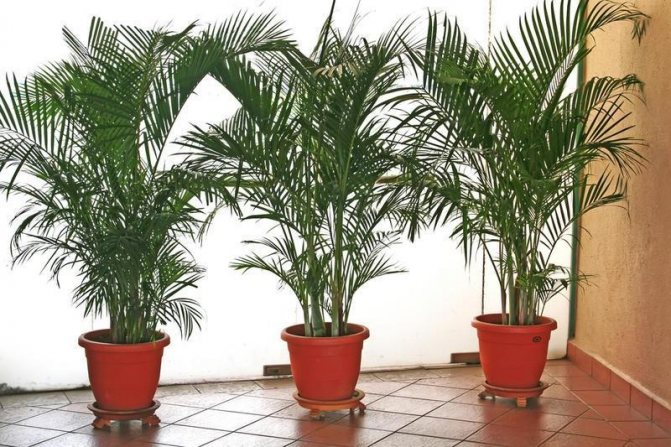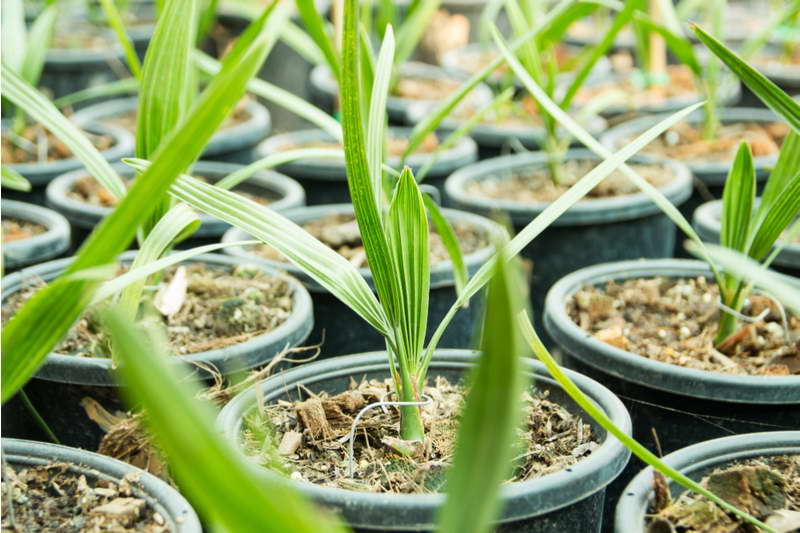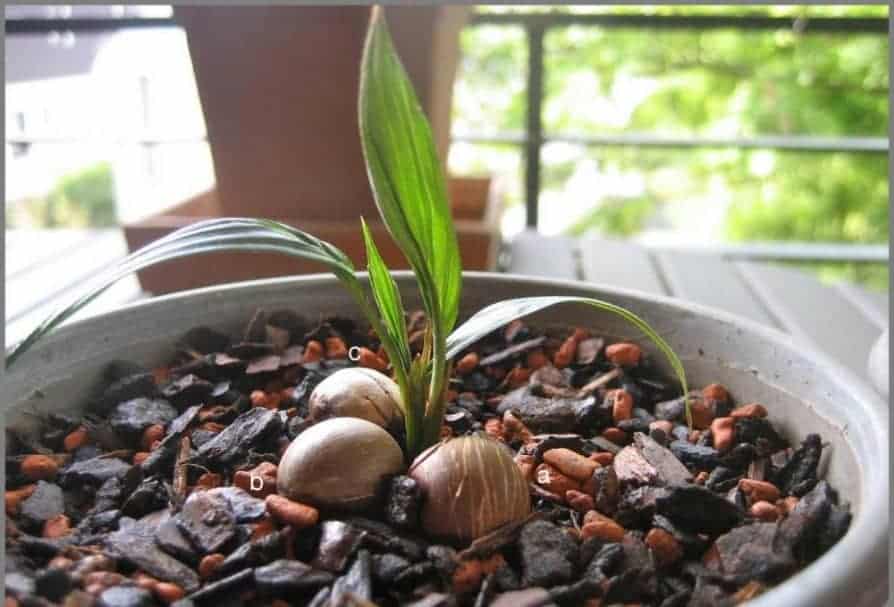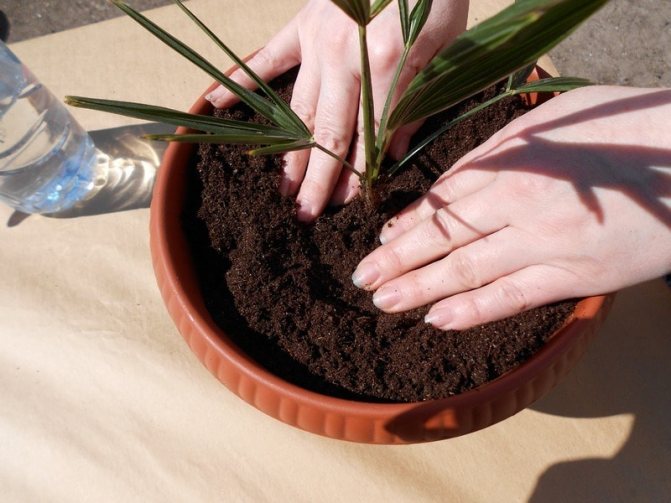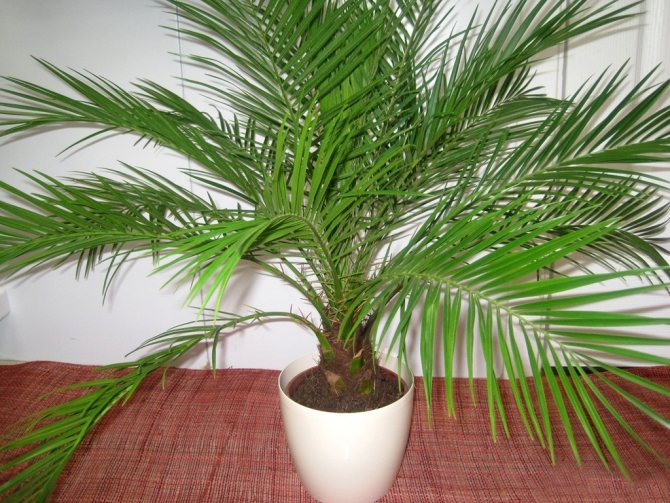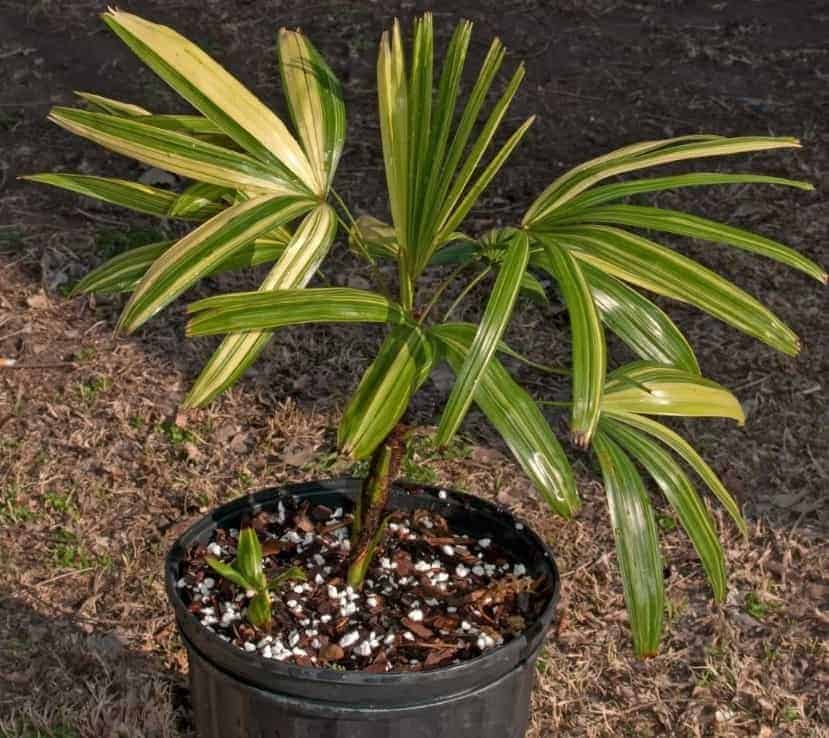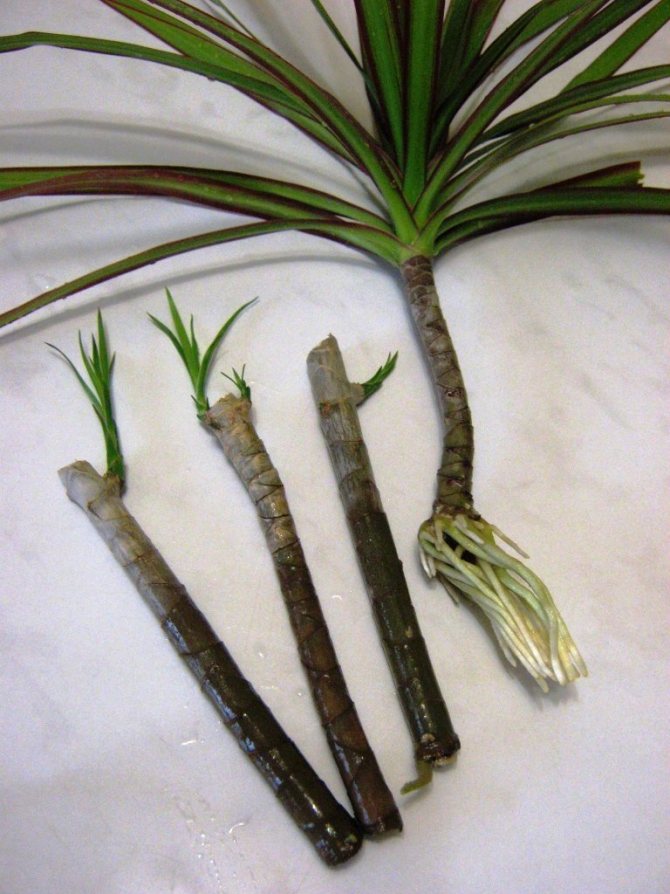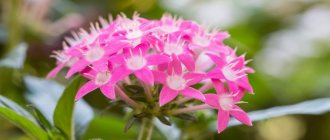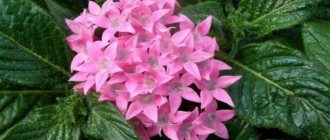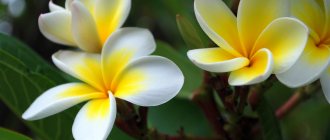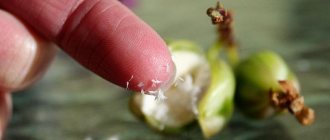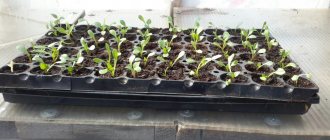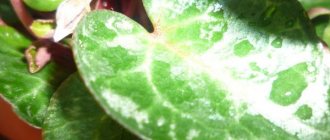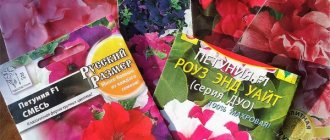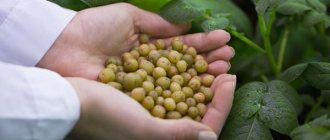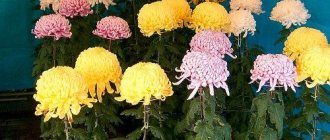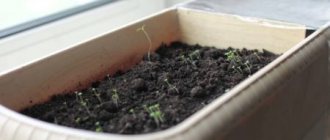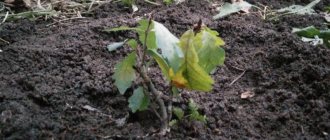- Seeds
- Seed preparation
- Sowing
- Caring for small palms
- Vegetative propagation
- By shoots
- Tops
- Cuttings
These tropical dwellers can look different - in the form of an open fan or huge, beautiful feathers. Everyone can decide how to propagate a palm tree at home and grow a beautiful plant.
Most of these plants do not branch, so they cannot be propagated by cuttings. They can be propagated vegetatively, but the main method is seed.
general information
Everyone can grow a date palm without assistance at home: there are more than 15 species of palm varieties, you can choose a culture for every taste and appearance. The date plant belongs to feathery-leaved palms, in the same group is the coconut palm. In favorable conditions, the palm tree grows up to 35 m. The height of the domestic culture is much lower.
The finger date is a palm or small shrub with long, feather-like leaves. The plant grows bushy with a bright green color that persists all year round. The leaves of the palm tree fall off due to disease, and in favorable conditions, it remains green. It is necessary to keep the plant in spacious rooms: the palm tree grows rapidly, and in unfavorable conditions the foliage quickly fades. Date flower is yellow. Inflorescences form panicles.
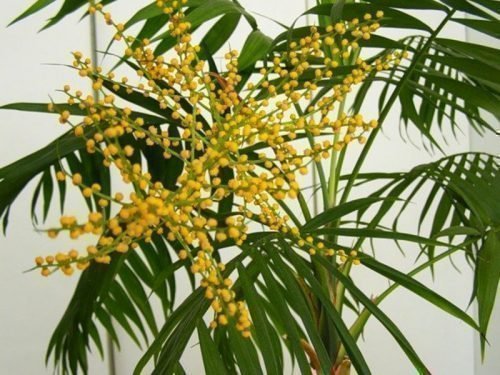
The date begins to bloom and bear fruit after the growth of the main stems ends, and the palm grows up to 10 m.
Soil mix
The palm tree reproduces best in light, fertile substrates. For this culture, the following mixture is often made:
- 1 volume of coarse sand;
- 1 volume of fertile soil;
- 2 volumes of good humus.
River sand works best. At the bottom of the container, you need to pour a drainage layer of fragments of red brick, since excess moisture can cause rotting of the root system.
There is little sunlight in the room facing north. In this case, it is advisable to install the tree right next to the window, creating for it a background of light curtains that additionally reflect light.
In the early years, the leaves of young palms differ from those of adult plants, they are very delicate. Caring for grown plants is no different from caring for adult palms.
Palm care and how it reproduces depends on the type of plant. Some types of palms reproduce only by seeds, some can be propagated by division or daughter offspring. Adhering to these tips, it will be easy even for an inexperienced grower to grow a beautiful palm tree.
How to propagate a palm tree
Varieties
The domestic date palm is a beautiful evergreen plant. Once the palm tree reaches its optimal height, it blooms and bears fruit regularly. The type of date determines the external features of the shrub located at home.
- Canary palm.
- Robelena.
- Finger dates.
- Theophrastus.
- Forest.
A date palm for planting at home does not need to be cooked for a long time: it is planted from an ordinary seed, which can be purchased in a store, or obtained from a ready-made fruit. The height of the shrub depends on the type of plant and the period of its growth.
Popular varieties are suitable for growing at home or in the office.Dates differ not only in growth conditions, but also in planting time and flowering method.
Canary date
The palm tree owes its name to the Canary Islands: it grows on rocky terrain. The plant has a main trunk, which grows up to 17 m. The width of the stem reaches 0.7-1 m. The domestic Canary palm tree is distinguished by a small height of up to 7 m. The leaves of the variety are large (in the form of an elongated feather) of a bluish tint.


At home, this variety does not bloom. For him, the temperature regime is observed: in summer and winter not less than 10 ° C. The trunk needs a lot of fresh air, but you shouldn't leave it in a draft either. The Canary variety loves shade. The seed is planted in a pot with a drainage layer. Abundant watering is necessary in spring and summer, in winter and autumn watering can be reduced by 2-3 times. A palm tree is grown from seeds: an unripe seed is suitable for planting, which quickly takes root.
Robelena
The tropical plant loves heat. It is a multi-stem shrub, it is resistant to adverse environmental conditions. The average height of the Robelen date is 1.5 m, under favorable conditions up to 2 m. The trunk diameter is no more than 15 cm. The leaves of the variety are very long (up to 1.5 m) and resemble a feather in shape.
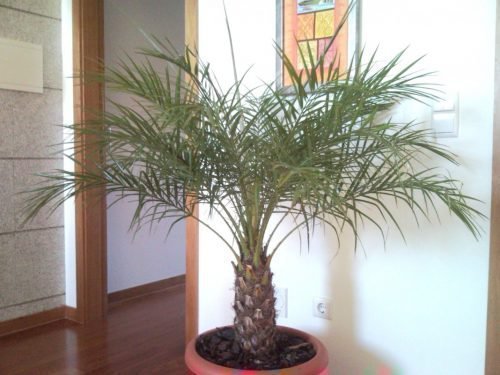

This type of date can be found in botanical gardens. It is small in size, but with dense green foliage. The pot with shrubs is located on the south side of the building: in summer, in hot weather, the plant must be covered, creating additional shade. In winter, Robelena needs additional lighting. If necessary, a lamp is installed (for 10-15 hours a day).
Finger variety
The date, which grows in Iraq, can withstand the arid desert climate. Date fruits of this variety are popular all over the world as a delicious delicacy. The wild date palm reaches 25 m in height, and the home bush is no more than 5 m. The main trunk is covered with petioles of shoots: elongated leaves are arranged in a bunch at the top of the plant.
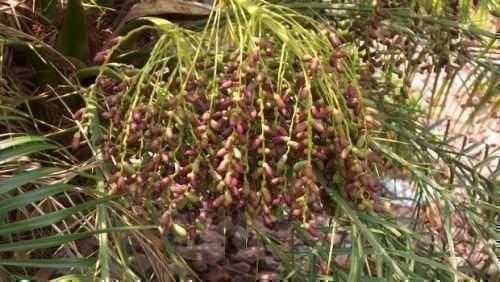

The date is planted with a finger from the stone. Before planting, the seeds are well soaked and filed. This preparation will ensure the rapid growth of the shrub. The plant requires constant watering and spraying of the trunk with foliage. The date is a resistant variety that can withstand temperature extremes.
Theophrastus
The variety that grows on the island of Crete is one of the rarest types of dates. The average height is 9 m, the leaves reach a length of 2 m (they have an elongated pinnate shape).
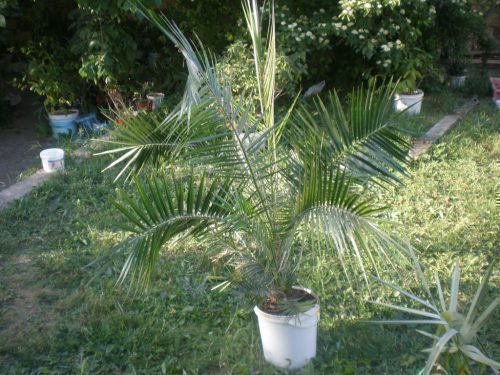

Root growth is formed around the plant, which protects the root system from changes in external temperature. Frost-resistant species withstands up to -9 ° C.
Forest palm
A popular plant in India, it is found in dry regions with low humidity. Forest palm trees grow into woodlands. The sap from the barrel is used to make sugar.
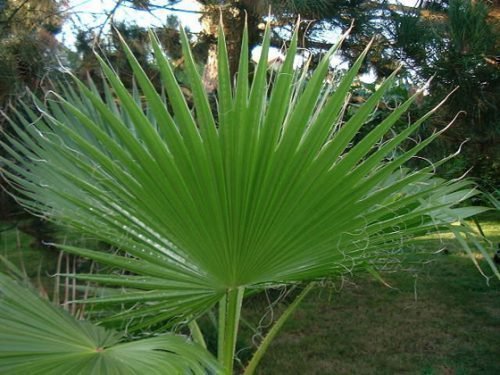

The average height of the palm is 12 m, the trunk diameter is up to 1 m. The leaves have an elongated arc shape. They are combined in 3 pieces with one base. The foliage is gray.
Vegetative propagation
The main part of palm species does not branch, forming only one stem, but there are exceptions, they are mainly grown in the room.
Such palms are called cluster, of which the most common are chamedorea, Robelen's date, cariota, hamerops, chrysalidocarpus. They can be propagated by root suckers.
Offspring
On the roots, which are close to the soil surface, root suckers are formed, rooting, they form an independent plant. Wait for rooting process of a palm tree, and using a sharp knife, separate the young plant from the mother bush, sprinkle the cut with ash.
The offspring is already sufficiently developed and it can be planted in a permanent place, but watering properly.
Tops
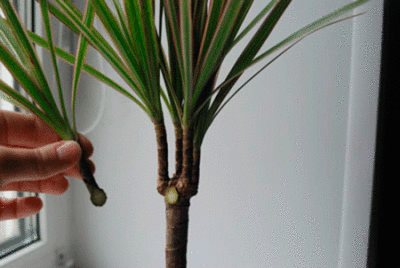

Actually, a palm tree cannot reproduce in this way, but there are plants very similar to them, which very easily reproduce vegetatively. More often than others, dracaena and yucca are grown in our homes.
To separate the top use a sharp knife or a small garden hacksaw, leaving a section of the stem to sink into the substrate. Leaves do not need to be dropped, most likely they will rot and will need to be removed, since the survival rate of dracaena and yucca is 90%. You can plant a plant in a permanent place, the composition of the soil for all plants of this type is one - 2 parts of humus, 1 part of garden soil, 1 part of sand.
Remember to cover the top with a plastic bag for a greenhouse effect. When the rooted plant releases young leaves at the top, the bag can be removed.
Cutting location does not need smearing and dusting, nature has provided for such nuances, the self-healing process begins immediately, and young shoots sprout abundantly from the buds below the cut.
Shoots
Shoots do not have their own roots, but they are easily formed when planting in the ground, it is necessary very neatly separate them from the mother plant and put on rooting with further planting in a permanent place, you can immediately in a permanent place. Don't forget to create a greenhouse effect.
Cuttings
The stem without the top can be divided for cuttings of 15 or 20 centimeters and put them in water until roots form, and then plant them in a permanent place. You can immediately plant the cuttings in the substrate, water it properly and cover with a plastic bag until rooting is complete.
Preparation of the bone
The home date palm is planted from the stone; for this, the stone and the soil are prepared in advance. Seeds (bones) are used that remain from the sweet fruit. Fruit processing does not affect the quality of the stone.
- the date pulp must be removed (the bone must not be damaged);
- the bone is soaked in water for 4 days (water temperature 40 ° C);
- water changes daily;
- on the 5th day, the bone must be dried.
It is important to clean the seed well, because the date fruit contains growth inhibitors that inhibit the process of seed germination. When soaking the seeds, cellulose fermentation occurs, which allows you to completely clean the seeds, but you must not forget to change the water, otherwise the source material will deteriorate.
Read also Premium Poodle Food
Growing a date at home follows a simple scheme: several seeds are planted, which lose their germination by 10% per month, so the cultivation of a date is carried out immediately after the purchase of the fruit.
Fundamental rules
You can store the treated seeds for no more than a day, the soil and the pot must be prepared in advance: if the seeds are dried for too long, they will not sprout. To plant a plant you will need:
- fresh seeds;
- plastic cup (holes need to be made in it for drainage);
- the soil.
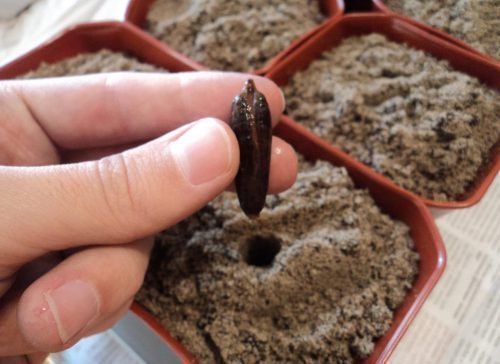

The date palm should be planted in the potting soil. For its preparation, parts of deciduous soil, perlite and vermiculite of the same weight are used. The prepared perforated glass is filled with the mixture and filled with a small amount of water (about 15 mm is left to the top of the glass).
The seeds are placed in the soil and covered with the rest of the mixture. The top layer (no more than 5-7 mm) is made from a mixture containing charcoal. The soil is again watered abundantly, after which the cultivation of the palm tree begins.
Conditions for the rapid growth of a plant
The home date palm will grow rapidly if properly cared for.
Dates can be planted at any time of the year.
Conditions for dates to sprout quickly:
- the soil must be warm, at least 35 ° C;
- lighting should be bright and constant;
- the soil should not dry out.
If planting is planned for a cold season, watering occurs 2 times more often than in summer.The indoor date palm germinates from 7 to 9 months.
Indoor dates at home are transplanted during a period of rapid growth. Over time, the leaves are trimmed and the main trunk is formed.
Temperature regime
The flowering time of the date is spring and summer, during this period the plant needs a warm ambient temperature. The inflorescences break off, and the dates are rearranged in a small shade. The optimum temperature for popular varieties is 10-16 ° C. The minimum and short-term air temperature that a room date can withstand is -5 ° C.
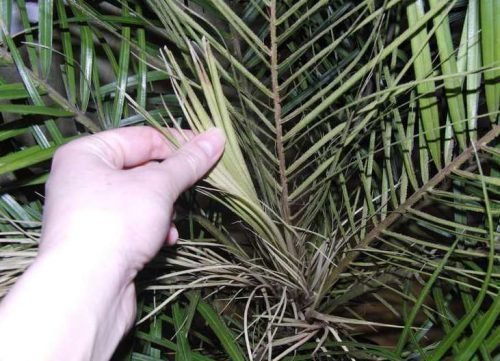

Caring for a palm tree includes maintaining the optimum soil temperature in winter, if it is not possible to insulate the room, insulation is lined on the top layers of the soil.
Lighting
The best date for a date is intense diffused light. For a palm tree, date care at home involves moving the pot: once every 2 weeks, turn the shady side of the foliage towards the light. Uniform heating of the shrub will accelerate its growth.
Excessive consecration immediately affects the appearance of the bush: the leaves quickly turn yellow and fall off. If the foliage becomes dry, it is necessary to reduce the amount of light in the room or move the plant to another location. In winter, lamps are used for additional illumination of all varieties of dates, thanks to which the plant will be green all year round.
Watering
Growing dates at home is easy: you should moisten the soil as it dries. It is impossible to fill in the soil, the root system will begin to rot. To feed the plant with moisture, warm water at room temperature is used.
Water the palm tree at least 3 times a week in summer. In winter, water can be watered 1-2 times a week. During the period of active growth, watering is combined with soil fertilization. Yellowing or blackening of the leaves indicates an incorrect irrigation regime for the crop. Additionally, the leaves are sprayed so that they do not lose their bright color.
Fertilizer
Date palms grow all year round, but need fertilizing only during the period of active growth, from August to September. The soil is fertilized every two weeks.
It is necessary to fertilize the soil with mineral elements during the growing season. After fertilization, the soil is watered abundantly.
Air humidity
Air humidity is an important factor that affects the condition of the foliage and the growth of the trunk. The optimum humidity in the room where the date grows should be 45%. This figure is suitable for regions with a continental climate and regular heating in winter.
To grow a fruit-bearing palm, you need to additionally spray the bush and create high humidity. In summer, when the date is brought out into the shade outside, you can spray it with regular rainwater. In autumn and winter, spraying should be abandoned, otherwise the high humidity will create all the conditions for the reproduction of the fungus.
Growing conditions
In order for the date to grow even, spreading, of a natural color, you need to follow the rules and provide it with comfortable conditions of detention. The first shoots will appear in 1-3 months. When the plant reaches 10 cm in height, make a pick using the transshipment method.
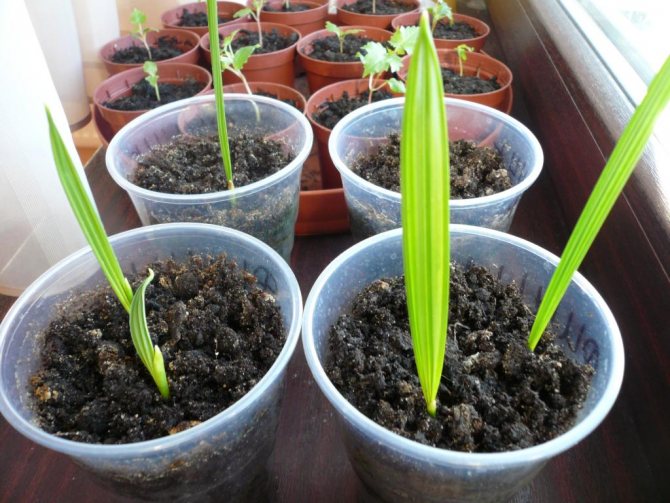

Lighting
The plant loves the sun, so it will be better for it in a room with windows facing south or southeast. In the summer, take the palm tree out onto the balcony or loggia. However, keep away from direct sunlight. The balcony must be glazed. Rotate the plant pot periodically, otherwise the leaves will not grow the same and the crown will form crooked. In the shade, the leaves grow longer, as they stretch towards the light.
Temperature regime
The date palm is native to the tropics, subtropics, the equatorial part of the planet, so it loves warmth. In mid-latitudes, she is comfortable in summer. In winter, room temperature is sufficient. In the greenhouse in winter, you need to maintain a temperature of +10 - +18 degrees. The room should not be hotter than 22 degrees.The room temperature for a date palm can be slightly higher in summer.
Until the sprout appears in the pot, ensure the air temperature is +30 degrees, moisten the ground as it dries.
Transfer
It is not enough to plant a date correctly, it must be transplanted in a timely manner. Transplantation is carried out in April or early May: the earthen lump around the plant does not collapse, so as not to harm the plant.
To grow a healthy palm, the young plant is replanted every year during the warm season.
Adult shrubs are transplanted into a new pot every three years, additionally, pruning of wave roots is carried out to accelerate the growth of the trunk. Transshipments (transplants) help to grow a palm tree only in cases where the plant is not sick. After the transfer, the soil is filled up in a new pot according to the level marked on the trunk. You cannot transplant a small plant into a large pot.
Pruning leaves
The date palm is gradually forming in a comfortable home environment. As it grows, the plant is transplanted and the excess foliage is trimmed.
Pruning which leaves involve proper care of the date: dead;
additional (on some varieties, extra shoots are specially cut off).
Dates often get sick, especially in winter, but you should not rush to cut off half-yellow leaves. A weakened palm draws juices from dying leaves, and they are an additional source of its nutrition.
When pruning dates at home, the trunk must not be damaged. If part of the root system of a palm tree is exposed during the growth process, half of the leaves are urgently cut to minimize moisture evaporation. Pruning correctly will allow you to grow a tall date tree without additional fertilization costs.
Read also A tree that looks like a chestnut
Choosing a pot
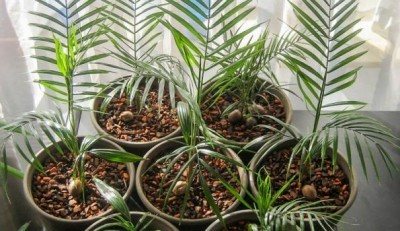

Primarily, the pot must fit the plant in size, you do not need to buy pots for growth, as they grow, they are transplanted into a more spacious container, besides, your taste may change by this time.
Ideal for all types of indoor plants ceramic pot, the palm tree is no exception, it is environmentally friendly, it regulates the water and air balance of the root system.
They also live in plastic containers and pots, but it is necessary to loosen the soil more often and arrange drainage more reliably, all kinds of wooden containers are good for a palm tree, they well emphasize the decorativeness of a palm tree, but they themselves require care when in contact with water, it is easier to use them as pots.
Home plant problems
Physiological problems with the date can harm its development. Why does the growth of a palm tree stop:
- Lack of fertilizers. Lack of manganese or iron in the soil leads to chlorosis of palm leaves. The plant stops growing and withers quickly.
- Leaves burn. Waterlogged soils can lead to foliage burns; immediately after root damage, the appearance of the date suffers.
- Magnesium deficiency. Chlorosis spreads rapidly from the edge of the leaves. The palm tree fades over time.
- Toxic effect on the palm tree. The brown tips of the leaves indicate the toxic effects of the substances on the root system of the palm tree. Distinguish between fluorine and copper toxicity.
Physiological problems need to be addressed quickly. When fertilizer is scarce, it is important to maintain the correct PH of the soil. Additional root feeding will help to correct the problem.
With a marginal burn, the soil substrate is changed, and the number of irrigation works is reduced. With a deficiency of magnesium, dolomite flour or magnesium sulfate is introduced into the soil. Toxicity can be eliminated by identifying the source of the pollutant and eliminating its effects on the plant.
Diseases
The date palm at home suffers from pests and diseases. Caterpillars, mealybugs and beetles are dangerous for palm leaves. Pests appear on palms that are not cleaned of dust. The more often the date foliage is washed, the less insects and beetles harm the plant.
Date trees are sick with pink rot, this is the most dangerous disease for the culture. Rot is dangerous for plants that are planted in pots without a drainage layer, since water stagnates in the soil. Pests can also weaken the protection of the date and create all conditions for the growth of the fungus. Symptoms of pink rot: rotting of foliage and shoots, a neglected disease affects the main trunk.
Fungicides are used to combat pink rot. They contain metal and mancozeb, which quickly destroy the foci of the disease. The date is processed for a week, then you need to take a break. The treatment course is repeated until the bush is completely healed.
Light: the plant prefers bright direct sunlight, shade only in the hottest hours.
Temperature: in spring and summer, during the growing season, moderate (20-25 ° C). The temperature in the autumn-winter period for most species is 15-18 ° C. Some species overwinter well at 8-10 ° C.
Watering: in the spring-summer period, abundant, as the upper layer of the substrate dries up. In the autumn-winter period, watering is moderate, a day or two after the top layer dries. Drying of the substrate and excessive waterlogging are prevented.
Air humidity: it is advisable to choose a place for the plant with the maximum air humidity. Spraying is desirable throughout the year. Spray with well-settled or filtered water.
Top dressing: from April to the end of August, every 10 days, plants with organic fertilizer, sometimes alternating with potassium nitrate (10 g per 10 l of water). In winter, feeding is reduced to 1 time per month.
Dormant period: in the autumn-winter period. Watering is moderate, the temperature is in the range of 15-18 ° C, the plant is sprayed. Top dressing is carried out no more than once a month.
Transfer: young plants are carefully transferred every spring. It is necessary to transplant, or better transshipment, for adult plants in the spring, no more than 1 time in 4 years. Every year, the top (2-4 cm) soil layer must be replaced with a new, nutritious one.
A palm tree bought in winter, when placed in room conditions, can hurt and lose leaves, it is better to acquire it in spring and summer.
With insufficient watering, palm leaves fall down.
If the air is too dry, the tips of the leaves become dry.
At too low temperatures and drafts, the leaves darken and wither.
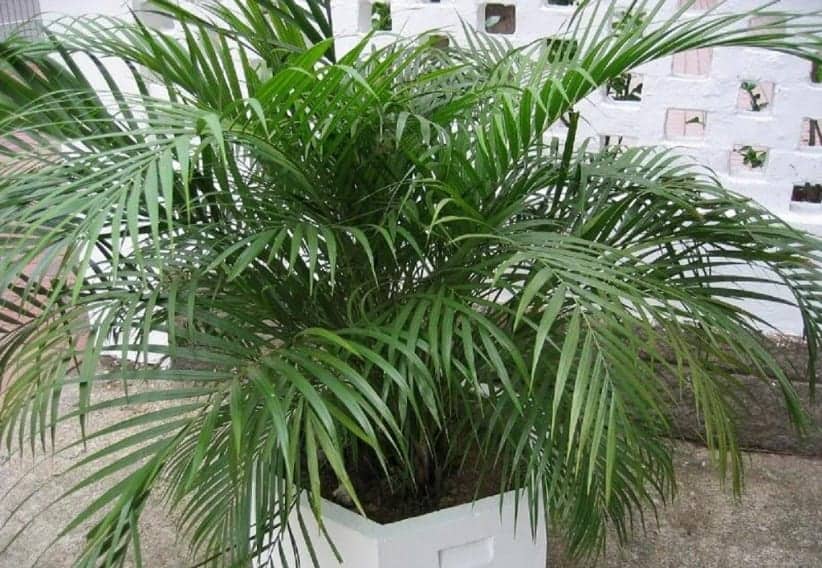

Palm trees are exotic for our region, and more often similar trees with unbranched trunks can be found on the pages of printed publications ... or in tubs, but only representatives of decorative species. The latter are inferior to "wild" plants in almost everything - growth, fertility, crown size, but not beauty - a small palm tree can be incredibly pretty.
But, an unusual tree is less familiar to flower growers and raises a lot of questions, including how many years a palm tree has been growing and how can you get your own original tree?
Seed propagation
How does indoor palm propagate by seed? Seeds multiply all types of palm trees, without exception, and hovea, washingtonia, li-kuala, trachycarpus and livistona - only by seeds.
The longer they have been stored, the less chance of waiting for germination, be sure to read the labeling and do not buy seeds with an expiration date.
Seed preparation
Be sure to free the seeds from the outer shells, if any, and place for a few days. into warm water for swelling.
The place for the container with seeds should be warm, up to 30 degrees, the water can be changed. If the seed coat is very strong, it should be filed with a rasp, but very carefully, without damaging the seed itself.
Sowing
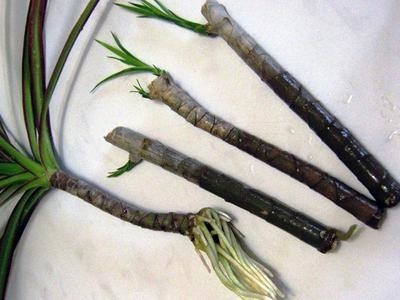

Suitable for sowing and boxes, and plastic jars, and disposable cups, but if the seeds are large, you need to pick up a larger container, if it is a coconut - do not forget to put it on the side seam, this will accelerate germination.
Fill prepared containers substrate from garden soil and sand in a ratio of 2: 1, the top layer should be sandy, and sow the seeds to a depth of 2 or 3 centimeters.
Sandy soil is washed out during watering, in order to avoid this it is worth using sprayer... The containers need to be covered with polyethylene, with its help a greenhouse effect is created, so necessary for plants during germination.
Coconut palm
This member of the palm family is the only species of the coconut genus. The tree learned its name because of the shape of the fruit, reminiscent of a monkey's face - soso. Also, the coconut tree is called the lithocarium.
In the natural environment
Under optimal natural conditions, the lifespan of a tree can be 60–70 years. It is already possible to get the first nuts from a 7-9-year-old plant - by this period it has a fully formed, strong trunk, capable of aging heavy fruits.
The lithocarium growing in natural conditions can bear fruit on average for half a century. And in order to get coconuts, people have to climb the stairs to the very top, where they are located in groups of one and a half to two dozen.
Nuts ripen for more than one month, for this they may take from 8 to 10 months. On average, one such palm produces more than a hundred fruits per year.
Despite the fact that the fruits of the tree are called nuts, if you highlight the botanical features, then this is a multi-layered drupe, consisting of:
- exocarp - outer shell;
- coir - fibrous layer;
- endocarp - the shell of a nut, which is distinguished by its hardness, located inside.
Coconut pulp is the seed of the fruit, this layer fills the endosperm - a translucent white emulsion that thickens and hardens as it ripens.
Almost every part of the tree is used for one purpose or another:
- coconut water, milk and pulp have medicinal properties - analgesic, antipyretic and others
- the pulp is used for the preparation of oils, confectionery chips;
- the top shell goes to the substrate for the garden;
- the trunk is made of solid wood, from which furniture and flooring are made.
Read also Wooden honey spoons
And these are not all the options for using parts of the coconut palm.
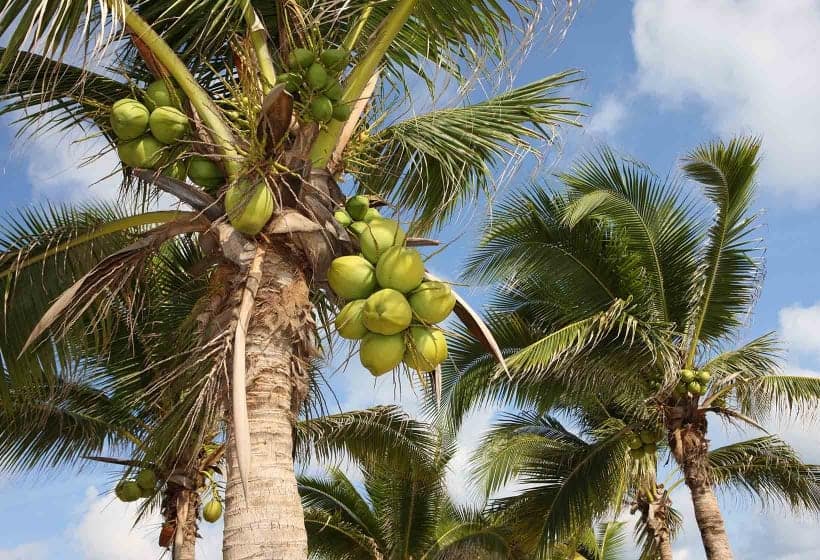

At home
In the natural environment, lithocariums can reach an impressive, 25-30 meter height, therefore, it is difficult to imagine such a giant growing at home or in a greenhouse. But, as it turned out, ornamental trees, most often, do not grow higher than 6 meters and they are often used when developing landscape design.
There are many types of coconut palms, but walnut and Weddel palms are of greater interest to lovers of home vegetation. They have a smooth trunk and crown of delicate, feathery leaves, which looks quite impressive. The life cycle of dwarf palms is 30–40 years.
To grow your mini-palm, you should know that they multiply by planting seeds, that is, nuts. It is recommended to take ripe, whole coconuts as planting material. They are placed in a reservoir with soil, submerged by 1/3, while the holes should be located on the side - of which, after 4–5 months, a sprout can be expected to appear.
Leaves are originally developed from coconut. As the palm grows, the lower leaves die off, and the fresh ones already appear at the top of the main stem, which will later be the trunk.
Plants such as palm trees grow slowly, for a long time and, with proper care, can delight the owner for more than a dozen years. But, the coconut beauty is very, very whimsical, she needs special care, and starting with the germination of the nut and with its further maintenance.
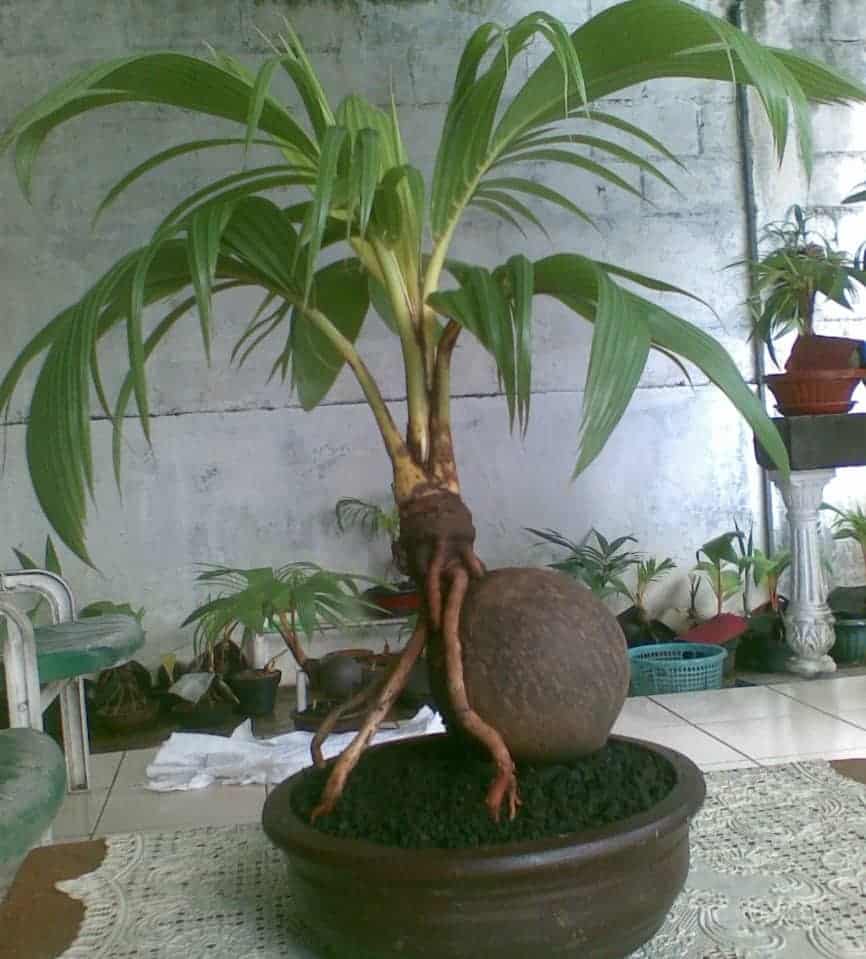

Date palm
The history and mythology of the Middle East keep many references to this tree, which was called nothing but the “tree of life” and believed that its fruits were food for the gods and the first people.The date palm was a symbol of fertility, prosperity, prosperity, which is not surprising - growing in an extremely arid, desert area, they not only did not die, but also gave a bountiful harvest of nutritious, fleshy fruits.
In the natural environment
You can meet this exotic tree in various countries where the climate is hot and in nature they are real long-livers. Information about how many years a date palm can live is impressive - from one and a half to two hundred years!
At the same time, plants from 7-10 years old begin to bear fruit annually, but a full harvest can be expected no earlier than 3-4 years after the first fruiting. The tree is capable of bearing fruit until the last days of its existence, however, by the age of 60–70 it reaches a decent height - this complicates pollination and harvesting.
Date palm grows intensively - up to half a meter per year, and a 15-17 year old tree turns out to be 6-7 meters high. On average, they grow up to 15-30 meters.
This is a plant with an almost straight, "shaggy" trunk due to the bases left in place of fallen leaves. On the top of the head are long - up to 4-5 meters, leaves, forming an impressive rosette. Inflorescences appear from the sinuses, and there can be several thousand of them on one palm. When the fruit ripens, the inflorescences cannot support their weight and bend.
Palm berry - date, is a very useful product that surpasses not only other fruits and vegetables in nutritional quality, but also cereals. But, thanks to the sweet, sometimes even sugary, taste, the fruits were classified in the category of excellent quality dessert fruits.
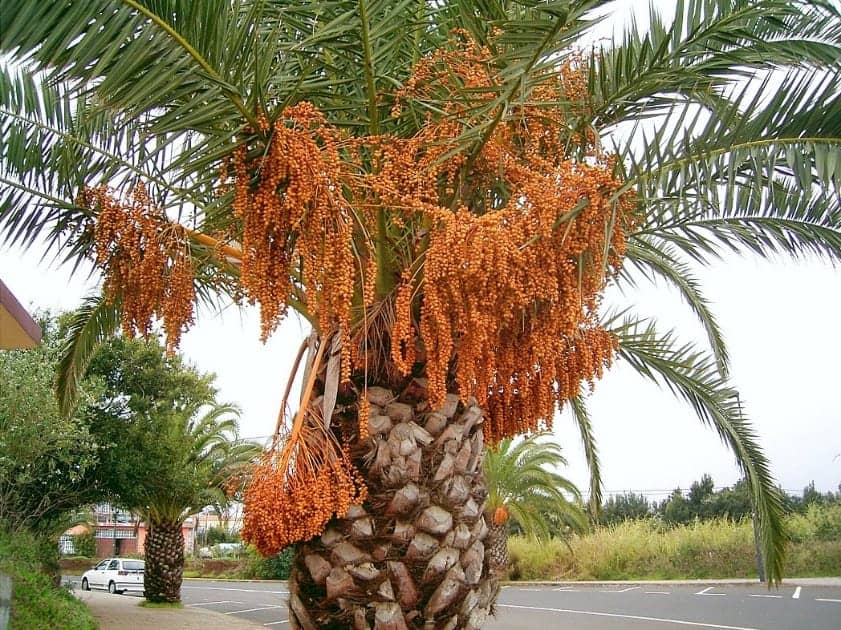

At home
Unfortunately, the Russian climate is not suitable for date palms, which love warmth and lack of abundant moisture. Unless, you can find such exoticism on the Black Sea coast. Also, decorative crops are planted in greenhouses and arboretums.
But, as it turned out, such a palm tree can also be grown at home from a stone, having previously germinated it:
- You should choose a kernel from a berry that has not undergone heat treatment and soak it in plain water for a day.
- The washed bone can be placed for 2 days in a thermos filled with warm melt water, adding grains of humate.
- After the events, the bone is placed in a tank with loose material - it can be vermicult, hydrogel, crushed and sterilized sphagnum moss.
- Everything is packed in a polyethylene bag and sent closer to the radiator - this will speed up the germination of the date palm seed - a very thermophilic plant
The sprout can be expected to hatch in 8-12 weeks, and before that it is necessary to maintain a suitable moisture content of the substrate and rid the film of accumulated condensation.
When sharp little sprouts appear, they need to be transplanted into the ground and palm substrate is most suitable for palm trees.
The date palm is not difficult to grow at home, but care will require some knowledge and effort from the grower:
- it needs maximum illumination, but the light must be diffused;
- in order for the crown to develop symmetrically, it is necessary to turn the pot with a palm tree 180 degrees a couple of times a month;
- 50% humidity is preferred;
- it is important to provide a container with a tree with drainage.
In addition, we must not forget about regular watering, top dressing and other mandatory activities.
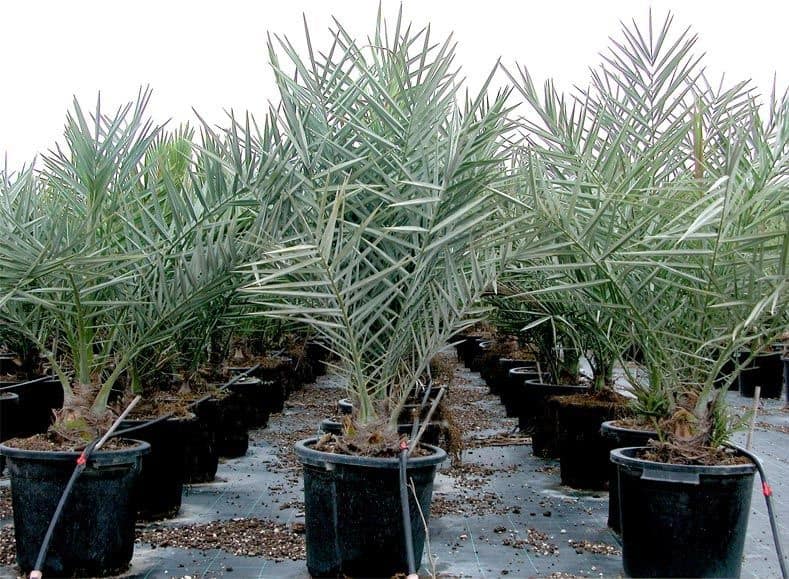

How dates grow
In the wild, dates can grow on trees and bushes.
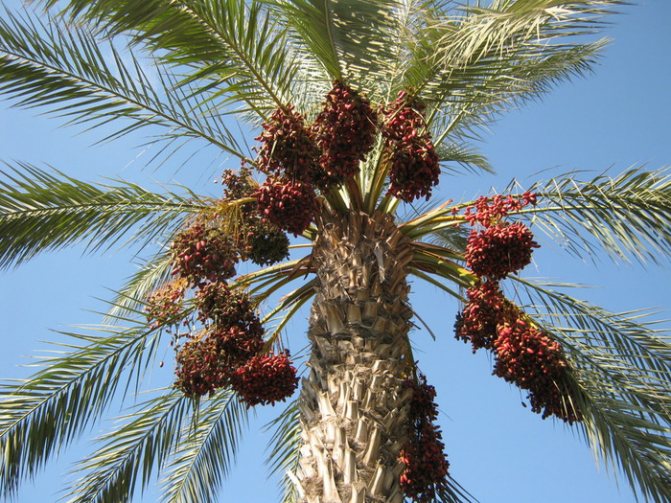

Date palm in the wild
The plant develops rapidly in the climatic conditions of the tropics, in the deserts of warm countries.
In what countries
North Africa and the countries of the Middle East have a natural environment for the development and fruiting of dates. The settlers of modern Saudi Arabia, Tunisia, Morocco and Egypt have been cultivating plants of the Palm family for more than 6 thousand years.At the same time, Indians dispute the claims of Africans, considering their ancestors to be pioneers in the cultivation of dates.
The current list of countries with finger dates includes Iraq, Bahrain, Algeria, Iran, United Arab Emirates, Tunisia and Syria. Palm trees are found in the USA, Egypt, California, Mexico and Australia. Saudi Arabia is the undisputed leader in the export of dates grown on its own lands.
Distribution in the wild
Palm trees thrive on sand, clay and heavy soils with moderate salinity. Plants withstand long periods of drought, but some species require stable water use. The need is easily met by periodic river floods and groundwater.
Interesting! The ideal temperature for flowering and fruit formation is + 17 ° C. Male and female specimens bloom from February to November.
Dates are propagated by seed. Pollinated by the wind. It takes 200 days for the fruit to ripen. What ripe dates look like on a tree - the texture of freshly harvested hard dates is dry and fibrous, with a brownish tint.
Where do dates grow in Russia?
Date shrubs need a humid climate for growth and fruiting. In the subtropical regions of Transcaucasia, as well as the adjoining subtropics of Iran, the summer period is sultry and dry. In winter, Mediterranean cyclones pass from the north side, Iranian cyclones in the southeast. The cultivation of date palms to the south of the Caucasus Mountains is producing good results.
Interesting. It is possible to admire exotic palm trees in Sochi, but due to the lack of comfortable conditions for the plant, the quality of the fruits on the bushes is low. Collections of botanical gardens, where forest and rejected dates are grown, are found in the subtropical part of Krasnodar, but these varieties have not become widespread.
Growing up in the countries of the former USSR
In the post-Soviet period, many experiments have been carried out to acclimatize finger dates in the USSR. However, the successful growth and fruiting of the palm was noted in the dry subtropics of the south of Turkmenistan. The abundance of fruits in Kazakhstan, Uzbekistan, Tajikistan and Kyrgyzstan is imported from southern countries. In the Black Sea subtropics, palm trees grow poorly and quickly die in conditions of high humidity.
The Canary date is more resistant to excessive dampness, it is widely cultivated as an ornamental shrub in the Krasnodar Territory, Abkhazia and Georgia.
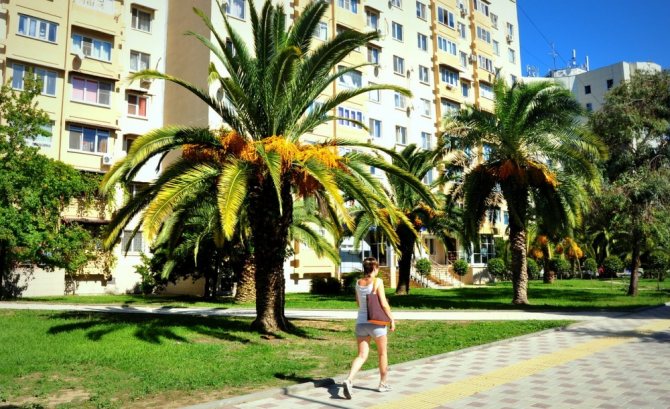

Ripening dates in Adler
Some specimens of Canary palms grow in the south of Crimea and in Azerbaijan (Baku, Lankaran). Planting date palms in the open lands of Ukraine is unsuccessful, even with winter shelter.

